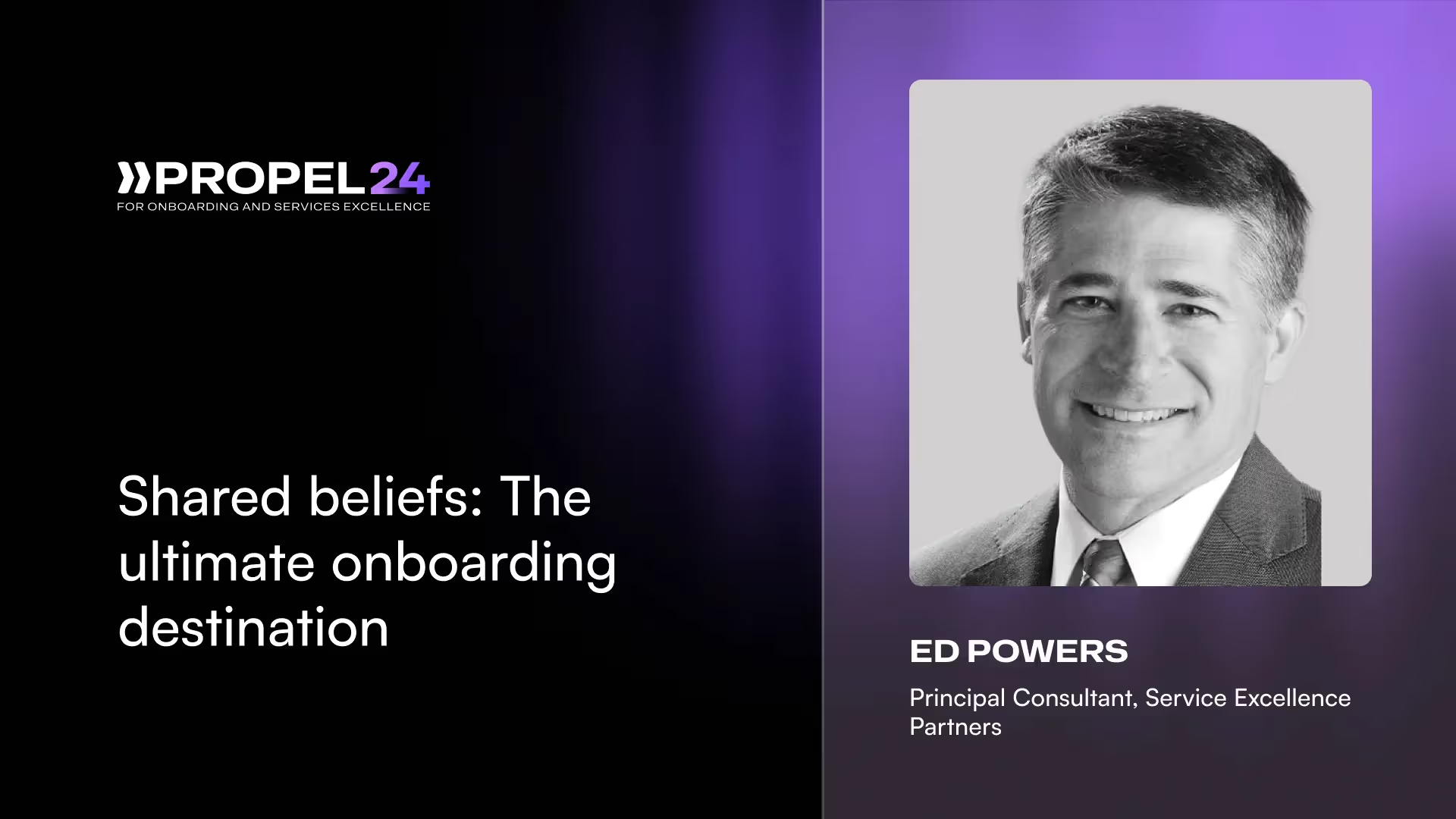With over a decade of experience in customer success, Ed Powers has dedicated his career to helping organizations boost customer loyalty by understanding why customers leave and, more importantly, why they stay and buy more.
As an expert in neuroscience and analytics, Ed brings over 37 years of rich experience in operations, consulting, quality sales, and marketing.
In his Propel24 session, Ed shared insights into how you can use principles of neuropsychology to build shared beliefs with your customers, foster stronger relationships, and enhance customer retention.
Customer success is about beliefs
Customer success is not just about achieving desired outcomes; it's about ensuring that a group of people believe they've achieved their desired outcomes.
Unlike B2C transactions, where individuals make purchasing decisions, B2B decisions involve groups. In B2B contexts, decisions are made collectively by multiple individuals. This means that you need to:
- Engage with all decision-makers
- Understand their unique perspectives on value
- Ensure that each of them feels their expectations are me
B2B decision-making units and role-based value perception
There are typically three key roles in a B2B decision-making unit:
- User buyers: These end-users need training and support and regularly interact with the product or service
- Technical buyers: These individuals assess the solution's technical aspects, comparing it against requirements and alternatives
- Economic buyers: These are senior executives who control the budget and make the final purchasing decision
To succeed in the B2B context, you need a comprehensive approach that addresses the needs and experiences of all stakeholders involved.
To do this, you need to focus on three key perspectives, namely:
- User buyer perspective: This focuses on how the solution impacts their daily work and productivity
- Technical buyer perspective: This considers the solution's operational efficiency and integration with existing systems
- Economic buyer perspective: This evaluates the solution's overall business impact and return on investment
The role of beliefs in the customer journey
Beliefs are a powerful force, shaping decisions and actions profoundly. Understanding the origin and impact of beliefs is crucial, particularly in the context of the customer journey in business.
Beliefs stem from two primary sources:
- Personal experience: Direct interactions and experiences shape our beliefs. For example, a customer who has had a positive experience with a brand will likely hold favorable beliefs about that brand.
- Social influence: Beliefs are also shaped by what others tell us, especially those in social groups we identify with or aspire to belong to. In the business context, this includes word-of-mouth recommendations, online reviews, and peer influence within industry circles.
Understanding how the brain processes and stores information can shed light on how beliefs form and influence behavior.
Leveraging the brain’s predictive coding approach to create and cement customer beliefs
The brain handles an overwhelming amount of sensory data daily, much more than it can store. To manage this, it uses predictive coding, which relies on three key principles:
1. Expectations and reality
Our brains set expectations about outcomes automatically and below our conscious awareness. These expectations shape how we perceive reality. We construct mental models and belief systems about how the world operates and interpret new information according to these beliefs.
Strong beliefs can distort our perception of reality. The predictive process of ‘prospection’ allows us to anticipate the future based on past experiences, such as advertisements or conversations in the customer context.
For instance, if a customer expects excellent service based on prior experiences, their brain is primed to look for signs that confirm this expectation.
When an outcome meets or exceeds our expectations, we feel rewarded, leading to a release of dopamine, which adjusts our expectations to predict future outcomes better.
Conversely, unmet expectations result in negative feelings, and dopamine adjusts our expectations downward. This reinforcement learning helps the brain fine-tune its predictions.
2. Error signals
When expectations align with reality, the error signal is small, and the brain discards most sensory data. However, significant errors capture our attention, indicating something unexpected.
For example, a surprisingly negative customer service experience will stand out and be remembered more vividly.
3. Reinforcement learning
As the brain refines its expectations, it also generates a confidence signal, which, combined with the expectation signal, forms a belief. Once established, beliefs are difficult to change. Positive experiences reinforce positive beliefs, creating a buffer against future issues. Negative experiences, however, solidify negative beliefs, making them hard to reverse.
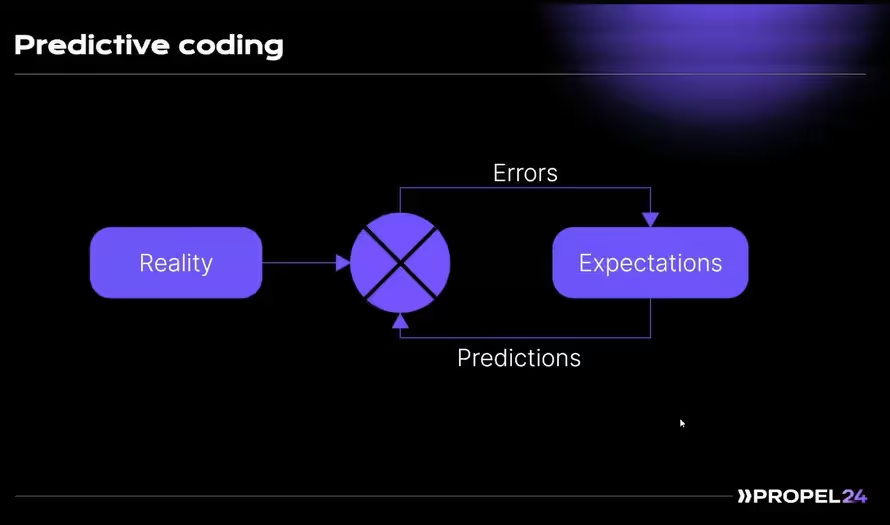
Two key principles of beliefs to remember while designing customer journeys
1. The social nature of beliefs
Beliefs are not formed in isolation. Interaction with others can amplify and align our beliefs. Studies, like those conducted at the University of Colorado, show that discussing beliefs within like-minded groups intensifies and polarizes those beliefs. In a business context, this means that positive experiences shared among peers can strengthen collective beliefs about a product or service, enhancing brand reputation.
2. Compounding of beliefs
Over time, the brain combines expectation accuracy and confidence levels, forming strong beliefs that resist change. Positive reinforcement leads to high confidence in the brand, while repeated negative experiences lead to skepticism and mistrust.
Applying the power of beliefs to design effective customer journeys
In a business context, you can leverage these attributes to beliefs to customer beliefs to shape the customer journey through:
Setting the right expectations
At the time of purchase, customers form expectations about the product or service based on past experiences, marketing, and sales interactions. For example, a customer may expect a software solution to increase efficiency based on marketing claims and salesperson assurances.
Therefore, customer success teams must set and meet clear expectations from the start, ensuring a positive customer journey.
Early effective interventions through customer onboarding
Ensuring positive outcomes from the start can put customers on a "happy path," reinforcing positive beliefs and insulating them against future issues. A successful implementation that meets or exceeds expectations strengthens positive beliefs, while a poor experience weakens them.
This explains why customer onboarding and faster time-to-value are critical aspects of the customer journey.
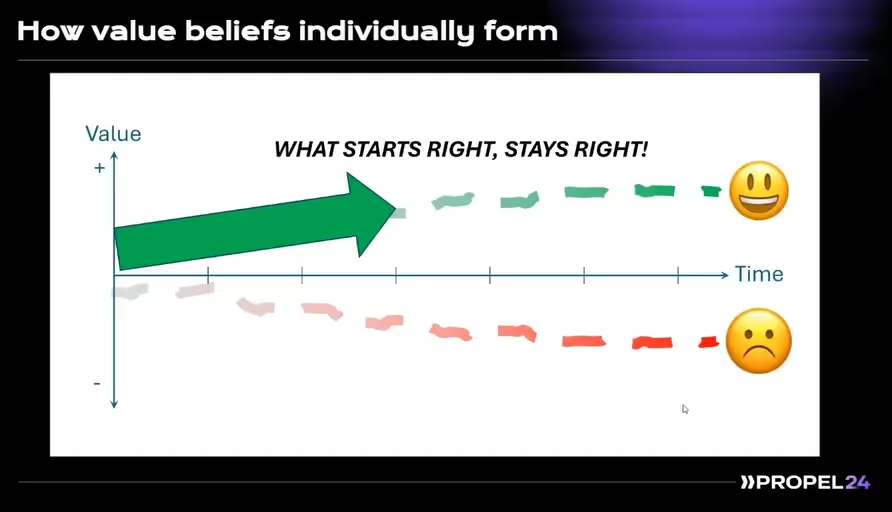
Creating multiple moments of proof
Different members of the decision-making unit (user buyers, technical buyers, economic buyers) experience value at different times.
Make sure the customer journey involves multiple moments of proof that leverage the social nature of beliefs. For example, user buyers might appreciate time savings on tasks, technical buyers might notice improvements in process efficiency and quality, and economic buyers might see increased productivity and reduced costs.
These experiences are shared and discussed among team members, magnifying the shared belief and significantly influencing future decisions.
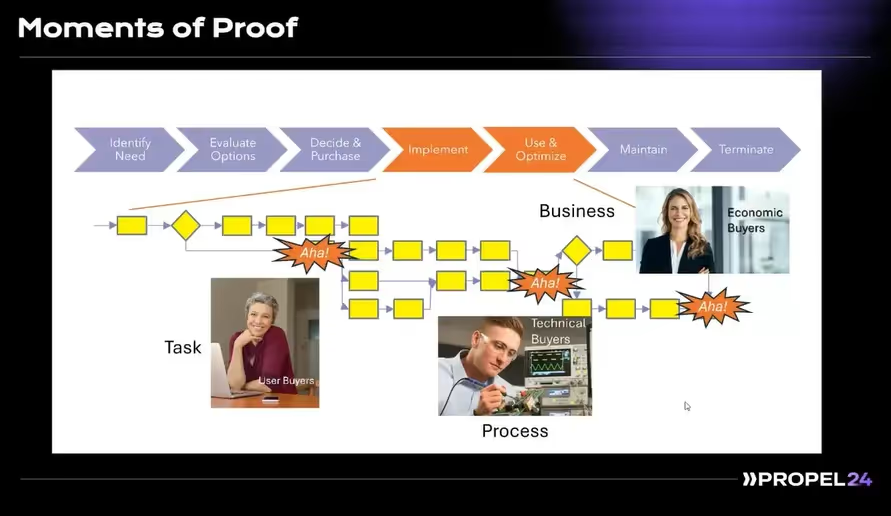
5 steps for building shared beliefs during the customer journey
1. Design moments of proof into the customer journey
Understand the customer journey from the customer’s perspective, not just your own. Investigate what they are doing and what is happening behind the scenes. Align your processes to these insights. Identify the moments of proof for different buyers—user, technical, and economic—anticipating when these moments will occur. Make these moments systematic, well-ordered, repeatable, measurable, and improvable, as they have a profound impact.
2. Clarify how each member of the decision-making unit defines value and how it will be measured
Recognize that every customer and decision-making unit (DMU) member defines value differently. During customer success planning, ask new customers how they define value and measure success. Tailor your approach based on their responses, making suggestions if necessary, but always be open to their unique perspectives. Ensure you understand and can measure value in a way that is meaningful to each member of the DMU.
3. Measure and monitor progress, intervening as necessary
Don’t rely on luck. Regularly measure and monitor progress. If things are off track, intervene promptly to correct the course. This proactive approach ensures that you stay on the happy path.
4. Spotlight each moment of proof and promote its communication
When customers express satisfaction or success, shine a spotlight on these moments. Encourage them to share their positive experiences within their organization. For example, if a user buyer notes a significant improvement in efficiency, ask them to tell their boss. If a technical buyer sees a drop in backlog and an increase in quality, encourage them to present these findings in meetings. This not only reinforces their positive experiences but also promotes internal advocacy.
5. Reinforce, reinforce, reinforce
Regularly remind customers of the value they have received. During executive business reviews (EBRs), revisit the significant improvements and successes they’ve experienced. This consistent reinforcement builds a shared belief in the value of your product or service, fostering stickiness and opening the door to renewals and expansions.
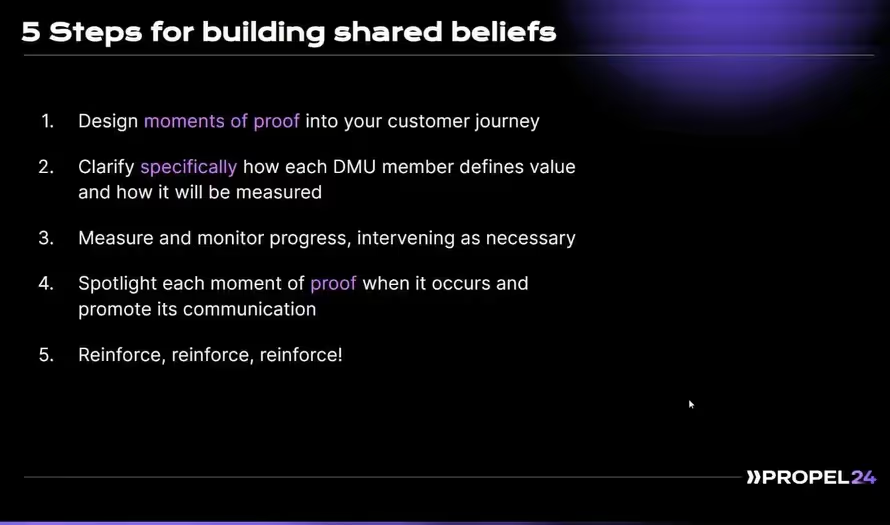
You can also check out Ed’s course Advanced Customer Success on Udemy, which dives into how you can apply neuroscience principles to drive continuous improvement in customer success.
Q&A with Ed Powers
1. Is there any way to predict moments? Any thoughts on best practices?
By tracking your processes and monitoring metrics to make that part of your design, you can anticipate when these significant moments will occur. Best practices involve highlighting these moments with your customers.
For example, if you're tracking metrics, show them the trends and point out when you've hit a milestone. Use data whenever possible. If you don't have specific metrics, use qualitative contrasts. For instance, ask how long a task took before and after using your solution. If they report a reduction from three hours to three minutes, that's a powerful contrast worth celebrating. Engage with them by asking, "Are you seeing this improvement?" This acknowledgment helps them recognize and appreciate the value they're receiving.
2. Some customers rely on us to let them know what value is. Would you suggest identifying specific milestones and sharing those with them to start, or having them identify these themselves?
While value is subjective, relative, and personal, as a company, you have a value proposition outlined in your marketing and sales.
Your job is to clarify and verify this with the customer.
For example, if your major value proposition is increasing productivity, discuss with the customer if they're seeing improvements in getting more done with less time, resources, and effort. Ask specific questions: "Are you experiencing the productivity gains we promised?" and "How do you measure that?"
Guide them to articulate what value looks like to them and agree on how to measure it.
{{demo}}


